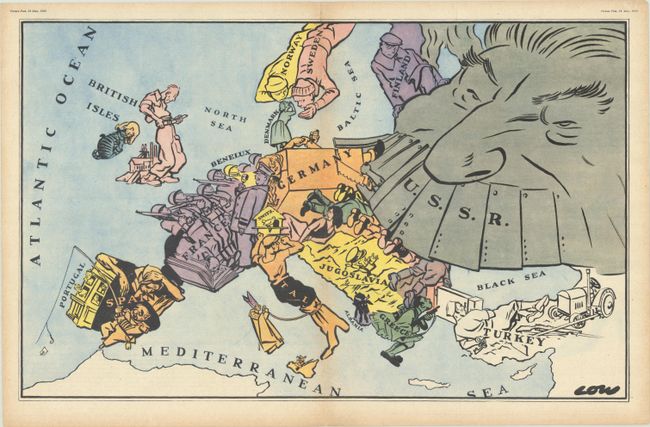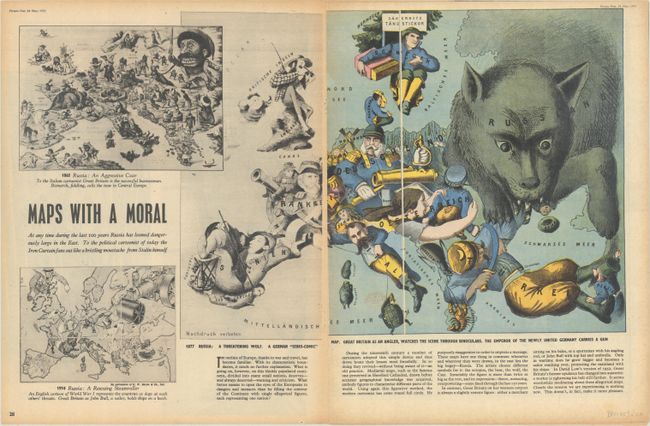Subject: Europe, War
Period: 1952 (published)
Publication: Picture Post
Color: Printed Color
Size:
19 x 11.9 inches
48.3 x 30.2 cm
This colorful and fascinating map of Europe accompanies a short article describing the origins and purpose of satirical maps, illustrated with three additional satirical maps of Europe from 1865, 1877 and 1914. The article explains how all of these maps has one trait in common: Russia has always been depicted as "fierce, menacing, overpowering." The large, centerfold map was created by David Low and features Russia as an oversized Stalin with his "bristling moustache" representing the Iron Curtain. Germany is depicted as a maiden in a cardboard box being sawed in half - in part by hands emanating from Russia. In contrast, Great Britain is illustrated as a factory worker tightening his belt. The power of the article is in showing the changes in how each country is represented over nearly a century (despite the fact that Russia's character remains the same). The map from 1865 was created by an Italian cartoonist (L'Europa Geografico-Politica Veduta a Volo d'Oca by Arturo Grossi) and shows Great Britain as successful businessmen sitting atop bags of money and goods. A decade later, a German map (Neueste Komisch-Ernste Karte von Europa fur das Jahr 1877 by A. Manz Publishing) depicts Great Britain as a fisherman watching mainland Europe through binoculars from afar. Conversely, Great Britain is represented by both John Bull, dressed as a sailor, and a strong and stout bulldog, both of whom engage upon Europe at the outset of WWI in the British cartoon published by G. W. Bacon & Co and titled Hark! Hark! The Dogs Do Bark!. Published in the 24 May 1952 edition of Picture Post, a British journal published between 1938-57. Additional advertisements and articles on versos.
References:
Condition: B+
Light toning along the centerfolds and edges of the sheets. There are small staple holes along the centerfold, as issued. The second image (with the article) is a composite image - this two-page spread crosses over two separate bifolia.





